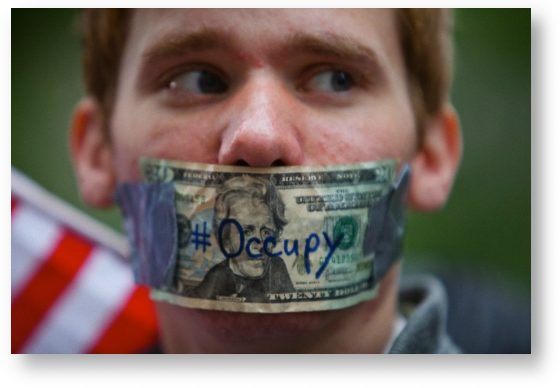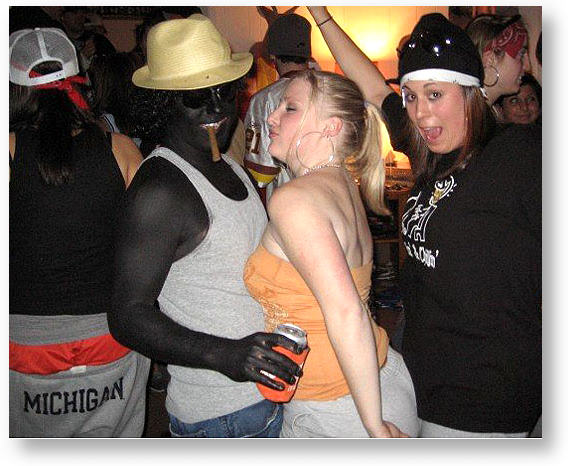October 12, 2011
Written by C.N.
Occupy Wall Street Movement: Real Deal or Just a Fad?
By now, I presume that you have heard of the Occupy Wall Street protests that began about a month ago, in which a small but fast-growing group of Americans camped outside of the large financial buildings in the Wall Street area of lower Manhattan to protest, among other things, the rising social inequality in U.S. society. The protests have since spread to numerous cities around the country (and apparently around the world) and at present, seem to be growing in popularity and media coverage.

One angle to look at is how the Occupy Wall Street movement may be the Left’s version of the Tea Party movement. While I have not looked into this particular aspect in detail, at first glance I think it is very interesting and even ironic that although this Occupy Wall Street movement shares much in common — at least philosophically — with the Tea Party movement, many of the latter’s prominent supporters have chosen to criticize the Occupy Wall Street movement. To my casual eye, this only highlights the hypocrisy of the Tea Party and confirms for me that is is less concerned about social change than it is about opposing President Obama and what he represents — namely the changing demographic, racial, and cultural face of U.S. society.
But beyond that, an even more interesting aspect of the Occupy Wall Street movement for me is its intentionally decentralized nature and how its most prominent informal leaders have specifically said that they do not feel that it is necessary or useful to articulate an overarching, single goal or unifying message for the movement. Below is a video clip from CBS News that discusses the movement’s reluctance to articulate a unified, central message.
Conventional sociological theory generally states that for a social movement to survive and have a realistic chance at achieving success, it needs to move beyond a single event and become more like a formal organization in terms of having a unifying message, clear leadership and personnel coordination, and well-developed administrative functions and capabilities. In other words, the early stages of a mass movement generally involve a sense of unrest or agitation, one or perhaps a series of events, a broad articulation of grievances, and an initial mobilization of collective action, media attention, and inevitably, some form of resistance or opposition.
But unless a movement can then develop strong leadership, mobilize resources, and sustain collective action, it is at this point where most social movements die. The Civil Rights Movement is often used as a model of how collective grievances eventually turned into a successful and sustained social movement through formalization, resource mobilization, organized division of labor, and political institutionalization. In fact, one of the most widely used books in the Sociology of Social Movements is Aldon Morris’ The Origins of the Civil Rights Movement that details how it evolved from collective grievances into arguably the most significant social movement in modern human history.
As applied to the Occupy Wall Street movement, conventional thinking dictates that it is eventually going to reach the point where it will either become more formalized, or it will flame out and pass into history. In this sense, the Occupy Wall Street movement’s choice to purposely remain unstructured and informal does not give me much confidence that it will be successfully sustained.
On the other hand, something also tells me that times have changed since the 1960s and that much like the rest of U.S. society, the cultural and technological landscape has evolved rather dramatically in the last 50 years or so. Obviously, back then resources such as cell phones, digital cameras, the internet, Twitter, and Facebook did not exist. Back then, communication and dissemination of information were slower, more crude, and more prone to confusion. If anything, knowing these limitations that existed 50 or so years ago makes the success of the Civil Rights Movement even more awe-inspiring.
In fact, scholars have described these types of social movements before and have called them New Social Movements (unfortunately creativity in naming things is not always a strong suit for academics). These New Social Movements tend to have decentralized leadership and organizational structures and instead relying on networks of groups that are affiliated or support their cause. They also tend to engage in nontraditional tactics — conventional protests but also TV ads, billboards, and extensive use of information technology and the internet. Some prominent examples of New Social Movements in recent history include the environmental, animal rights, anti-globalization, and peace/anti-war movements.
Today, with the widespread advent and dispersion of technological resources such as cell phones, digital imaging, and the internet, mass communication is infinitely quicker and more direct. Sociologists have started to write about just how much modern technology has affected and changed how human beings interact with each other on a daily basis. As applied to social movements, undoubtedly technology has made it much easier, quicker, and more effective to coordinate activities and disseminate all types of information.
In that sense, the Occupy Wall Street movement may not need to become formalized and organized into a hierarchy or bureaucracy in order to survive and become successful. The difference and advantage that they have today over their predecessors of 50 years ago is technology and the multitude of ways to dissemination information and to coordinate activities.
While technology itself cannot sustain a social movement, combined with the determination of participants and the fundamental importance and significance of the core issue of rising social inequality, the Occupy Wall Street movement may just be the right movement at the right time.
– – – – – – – –
Bonus: Check out this collection of some great protest posters of the Occupy Wall Street movement.


